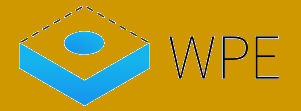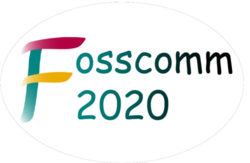In my previous post on WebKit, I explained how we can debug the WebProcess using GDB. In this post, I am going to talk about another useful debugging tool that can be used to debug graphics: APItrace.
Category: Posts related to work
During the years 2012-2021 I was contributing professionally to various FLOSS projects while working for Canonical and Igalia. These posts are mostly related to contributions and presentations I’ve done back then.
An easy way to debug WebKit’s WebProcess with GDB
WebKit is an engine that uses multiple processes and multiple threads at runtime. There are some very useful generic instructions on how to debug one of its processes on Linux (with focus on the GTK port) in this wiki page. They work pretty well when WebKit is built using the Flatpak SDK and the scripts and gdbserver is installed in the system, but I faced some problems when I wanted to built WebKit with CMake having custom build and installation directories. So in this post, I’m going to describe the easiest way I’ve found so far to debug it when SDK is not being used and a gdbserver is not present in the system. I’ve found this simple solution after having tried a combination of tricks from the WebKit wiki instructions, GDB documentation and a discussion with my colleages at Igalia.
Continue reading An easy way to debug WebKit’s WebProcess with GDB
Sharing texture data between ANGLE and the native system driver using DMA buffers and EGL on Linux (proof of concept)
This post is about an experiment I’ve performed to investigate if it’s possible to fill a texture from an ANGLE EGL/GLESv2 context (ANGLE is an EGL/GLESv2 implementation on top of other graphics APIs), and use it from a native (for example mesa3D) EGL/OpenGL context on Linux.
EXT_external_objects and EXT_external_objects_fd for the Intel iris driver have been merged into mesa3D! [updated]
This post is a quick status update on OpenGL and Vulkan Interoperability extensions for Linux mesa3D drivers:
Both EXT_external_objects and EXT_external_objects_fd implementations for the Intel iris driver have been finally merged into mesa3D earlier today and will be available in next release! 🎉
Using EGL and the dma_buf kernel framework to associate two textures with the contents of the same buffer without copy taking place
It’s been a few weeks I’ve been experimenting with EGL/GLESv2 as part of my work for WebKit (Browsers) team of Igalia. One thing I wanted to familiarize with was using shared DMA buffers to avoid copying textures in graphics programs.
I’ve been experimenting with the dma_buf API, which is a generic Linux kernel framework for sharing buffers for hardware access across multiple device drivers and subsystems, using EGL and GLESv2.
Setting up to debug ANGLE with GDB (on Linux)
ANGLE is an EGL/GLES2 implementation on top of other graphics APIs. It is mainly used in systems that lack a native GLES2/GLES3 driver and in some browsers for example Chromium. As recently, I’ve used it for some browsers related work in Igalia‘s WebKit team (more on that coming soon) and had to set it up for debugging with GDB, I’d like to share the few extra settings and the configuration I’ve used to be able to use GDB and step inside the ANGLE API calls to examine the underlying driver API calls, when possible, while I was experimenting with ANGLE-based test programs.
Continue reading Setting up to debug ANGLE with GDB (on Linux)
About VK_EXT_sample_locations
More than a year ago, I had worked on the implementation of VK_EXT_sample_locations extension for anv, the Intel Vulkan driver of mesa3D, as part of my work for Igalia. The implementation had been reviewed (see acknowledgments) at the time, but as the conformance tests that were available back then had to be improved and that was work in progress, the feature was stalled, and I had forgotten about it… Until some weeks ago, when I realized that it has been merged into mesa! 🎉
As this feature is now available to the users, I’ve decided to write a short blog post to explain what this extension is about. You can read the extension’s specification if you are interested in learning how to use it and other details.
Build WebKit/WPE on Linux/X11
There’s a lot of documentation online about building Webkit/WPE on Linux. But as most instructions are targetting embedded platforms developers, the focus is on building Webkit with Wayland using the flatpak-sdk to automate and speed up the building process. As the steps I’ve followed to build it on my X11 system and run the Webkit/WPE MiniBrowser on a nested Weston were a bit different from the recommended ones I thought that a blog post about them might be useful to people trying to build WPE/Webkit in platforms lacking Wayland, flatpak, systemd, and modern Desktop Environments like the latest KDE and GNOME.
Be careful though: this is not the recommended way to build WebKit/WPE, only the alternative steps I’ve followed in my personal computer until I have access to a building machine! If you are not sure about what you want to do with WebKit/WPE please take a look at the recommended wiki instructions before you follow mine!
FOSSCOMM 2020, and a status update on EXT_external_objects(_fd) extensions [en, gr]
FOSSCOMM (Free and Open Source Software Communities Meeting) is a Greek conference aiming to promote the use of FOSS in Greece and to bring FOSS enthusiasts together. It is organized entirely by volunteers and universities and takes place in a different city each year. This year it was virtual as Greece is under lockdown, and although we’ve missed all the fun of the gathering, there were many interesting talks to watch.
My talk was very similar to the one I’ve given in XDC 2020 about OpenGL and Vulkan Interoperability. It was an update on the EXT_external_objects and EXT_external_objects_fd OpenGL extensions status on various mesa drivers, and Igalia‘s work on them.
Continue reading FOSSCOMM 2020, and a status update on EXT_external_objects(_fd) extensions [en, gr]
A hack to instantly display the Vulkan CTS tests output
Vulkan conformance tests for graphics drivers save their output images inside an XML file called TestResults.qpa. As binary outputs aren’t allowed, these output images (that would be saved as PNG otherwise) are encoded to text using Base64 and the result is printed between <Image></Image> XML tags. This is a problem sometimes, as external tools are required to display them. In this post I’d like to share a few simple hacks I’m using to instantly display the CTS output image when I’m running a CTS test, hoping that they might be handy to more people who work on the drivers.
Continue reading A hack to instantly display the Vulkan CTS tests output

